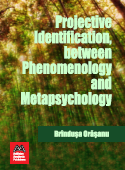Projective identification, between phenomenology and metapsychology
Projective identification, between phenomenology and metapsychology
Author(s): Brîndușa Orășanu
Subject(s): Philosophy, Psychology, Personality Psychology, Psychology of Self, Psychoanalysis, Phenomenology
Published by: Addleton Academic Publishers
Keywords: phenomenology; metapsychology; projective identification; psychology; ego; self;
Summary/Abstract: Projective identification has been described by Melanie Klein as an omnipotent phantasy according to which a part of the self is splitted and placed into the external object. Klein’s phrases are ambiguous and thus the reader cannot grasp if she means an internal or external object, a phantasy or a process. The part of identification in the projective identification relates more to active voice (identifying the other with oneself), and therefore the notion does not differ tremendously from that of projection. The word “into” has been highlighted as differentiator, and thus projective identification differs from projection only if the external object is the analyst, in its counter-transference. The main hypothesis of this book is: ostensibly close to the Freudian theory, Melanie Klein translates any component of external reality into notions of internal psychic reality of the subject. Anyway, the notion of projective identification expresses, in a contradictory way, the temptation of inserting external reality in the equation of psychic functioning of the subject, i.e. inserting the psychic functioning of the other. This theoretical temptation arises from the fact that the reference to the internal space of the external object can be explained only by an identification operated by the external object with the content projected by the subject. In order to support this hypothesis, this book approaches at length also other notions defining the central one: phantasy, Ego, Self, identification, and projection. The birth and evolution of the concept of projective identification indicates that it was meant from the beginning to express the counter-transference of the analyst.
- E-ISBN-13: 978-1-942585-31-2
- Print-ISBN-13: 978-1-942585-30-5
- Page Count: 151
- Publication Year: 2016
- Language: English
- eBook-PDF
- Table of Content
- Introduction
- Sample-PDF

